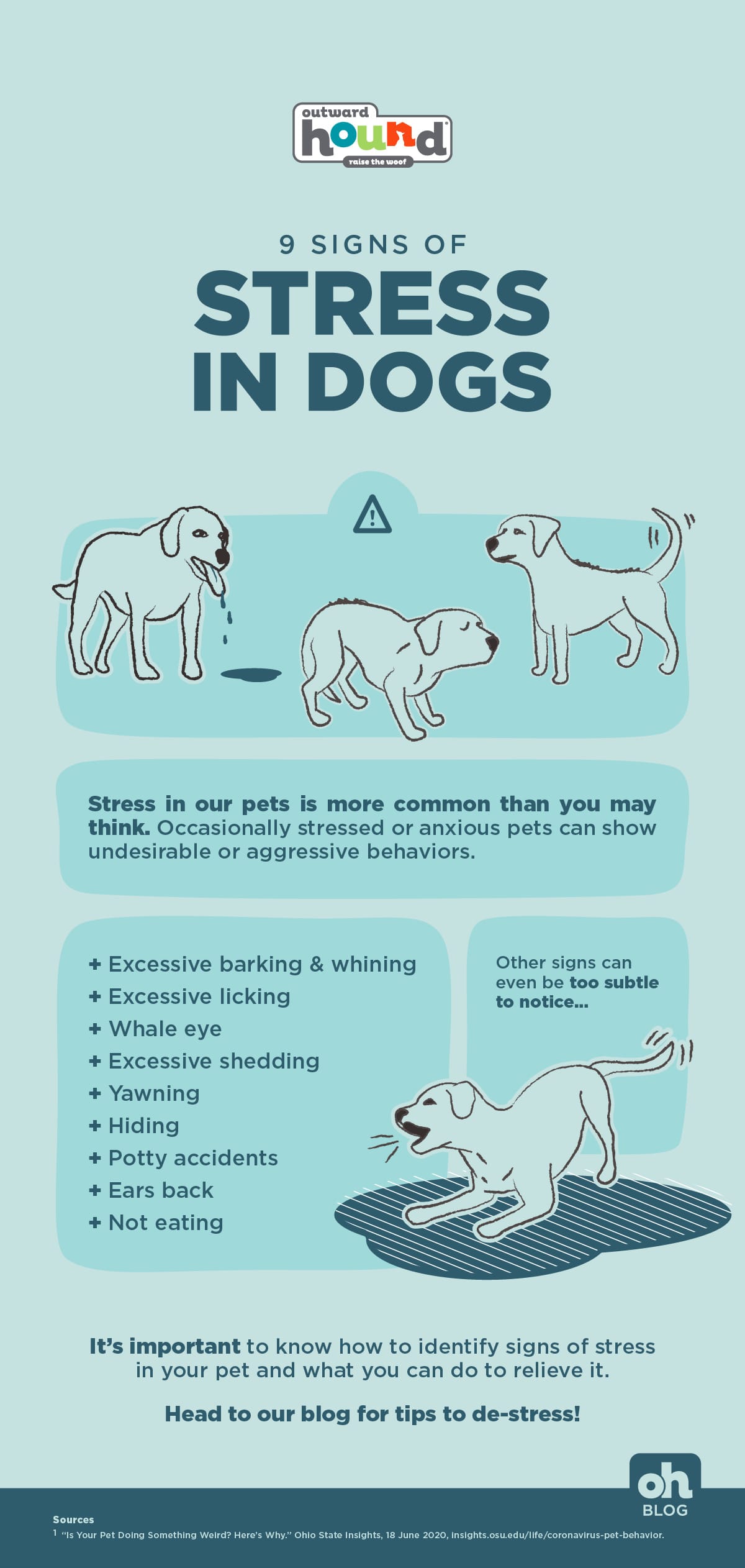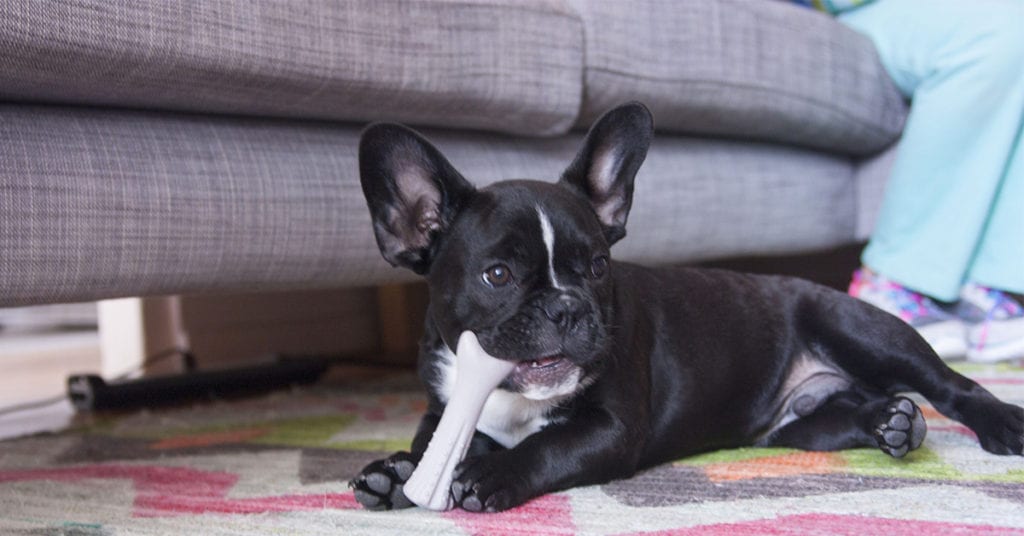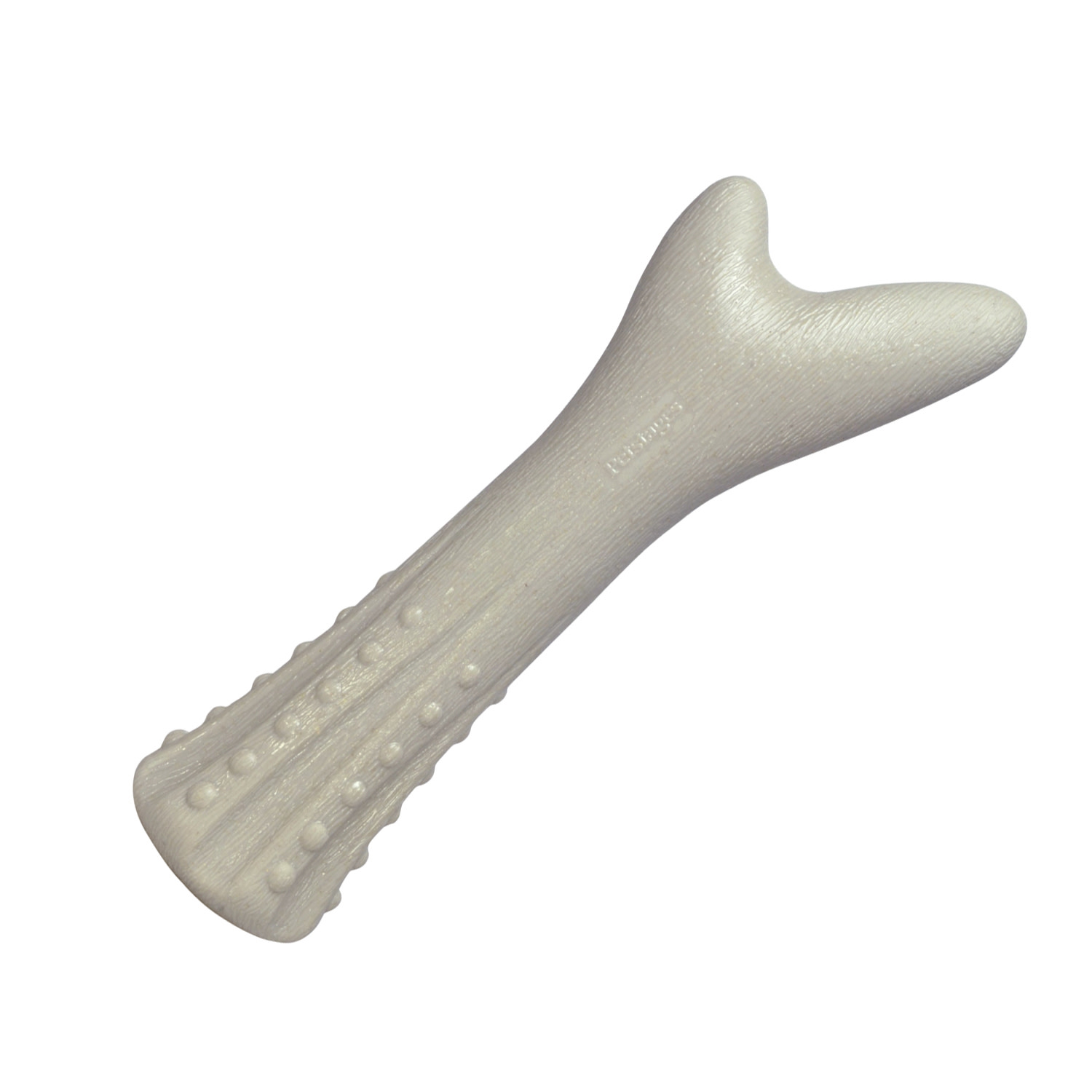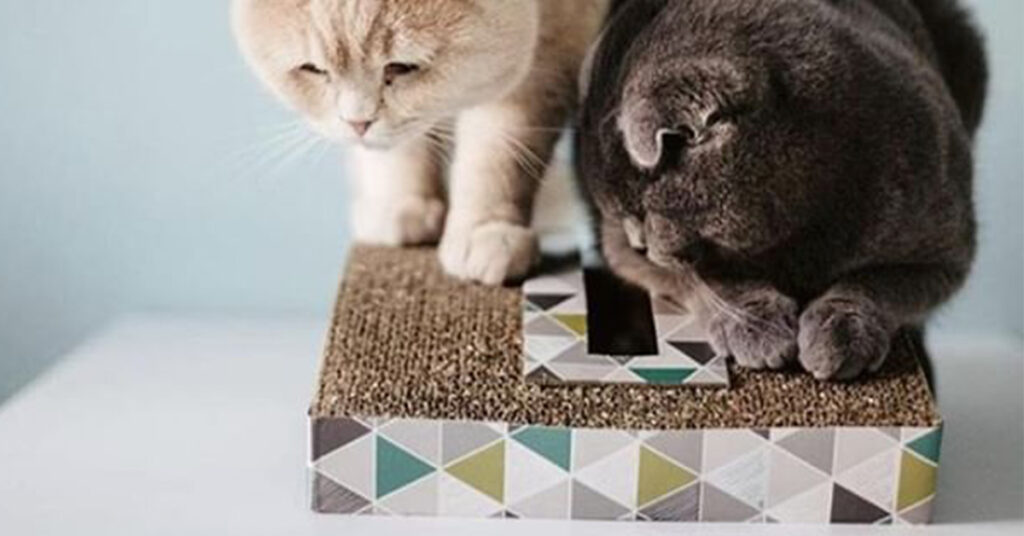Stress in dogs and cats is more common than you may think. The signs can be too subtle to notice. Occasionally stressed or anxious pets can show undesirable or aggressive behaviors. Therefore, it is important to know how to identify signs of stress in your pet and what you can do to relieve it.
Read on for common causes of stress in pets, the signs of stress in dogs and cats, and how you can help.
What causes stress in pets?
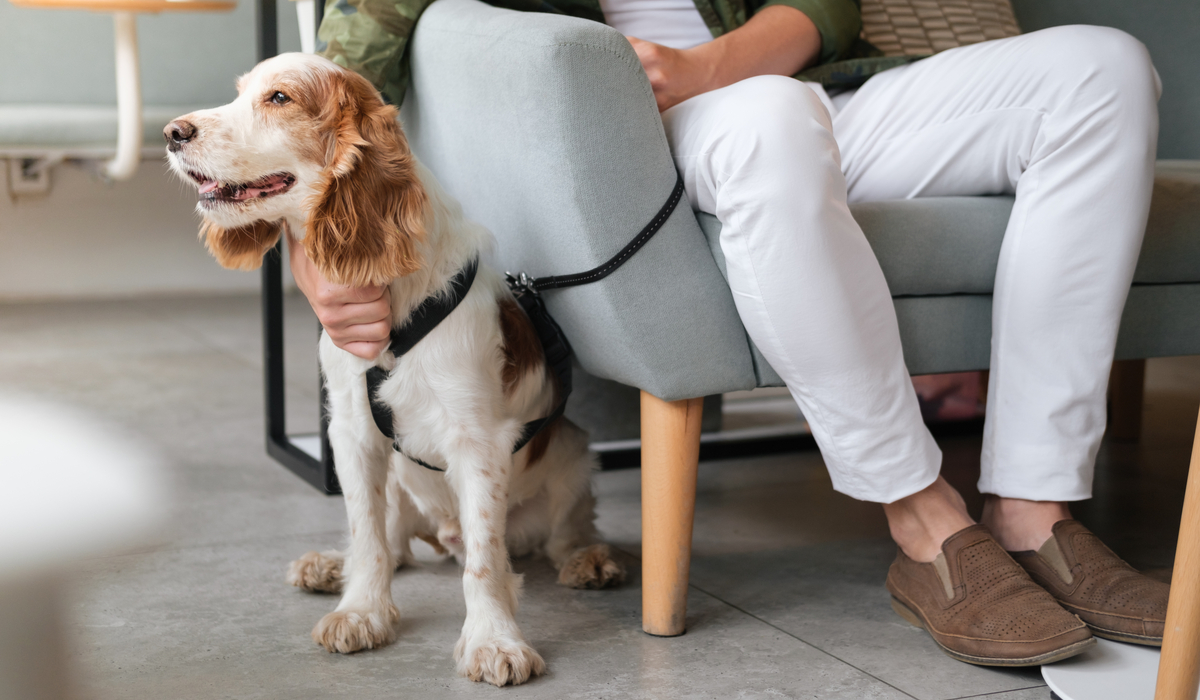
There are common situations that can cause stress in your pet. A few common occurrences that you may not realize are stressful situations for your pet include:
- having guests or many family members over
- having strangers over
- moving
- loud noises
- construction
- separation anxiety/you leaving the home
Some of these environmental stressors are simply unavoidable. That is why it is important for pet parents to know how to read their dog’s body language in order to determine if they are feeling anxious or scared.
Knowing the causes of stress is the first step to bettering their well-being.
Signs of stress in dogs & cats
There are many ways your dog or cat may be showing you that they are feeling stressed or anxious. Some stress triggers may be more obvious than others, as your pet might be acting out or simply telling you they are uncomfortable with their body posture.
These are just some of the telltale signs your dog is stressed:
1. Excessively licking or grooming
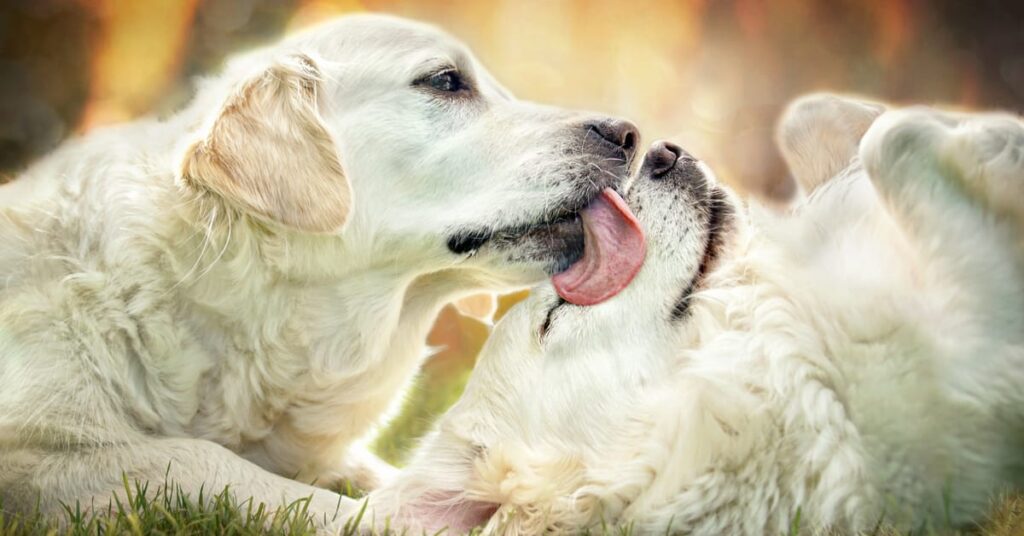
Licking is a calming, self-soothing activity for dogs and cats. Therefore, if you see your pet obsessively grooming themselves or lip licking around their nose and mouth it may be a sign of distress.
2. Whale eye or dilated pupils
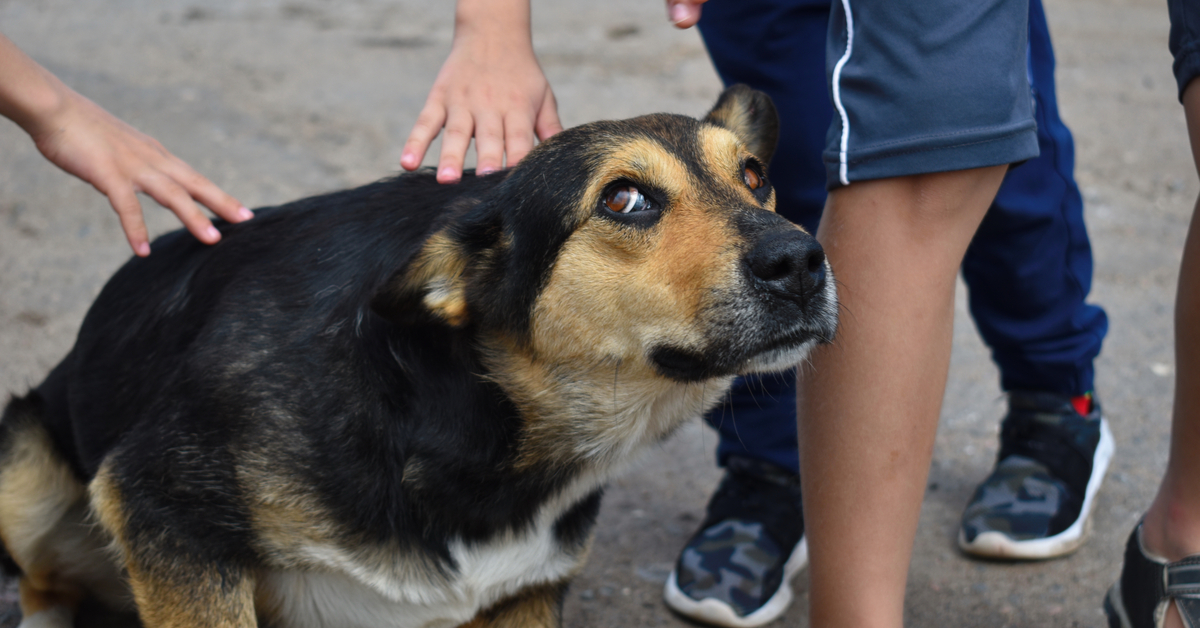
Another sign of stress in pets dog owners will encounter is the whale eye. Take note if you start seeing the whites of your dog’s eyes in certain situations. The whites of their eyes will usually appear in the inner or outer corner of the eye.
3. Excessive shedding

When your pet is stressed they may develop skin irritations. This can cause excessive scratching and/or shedding. Some shedding is normal but if it appears to be constant — they may be stressed.
4. Barking and whining
If your pooch or cat is whining more than usual they may be trying to tell they are stressed! Vocalization is a common way for pets to try to let you know how they are feeling or that they need something.
5. Yawning and drooling
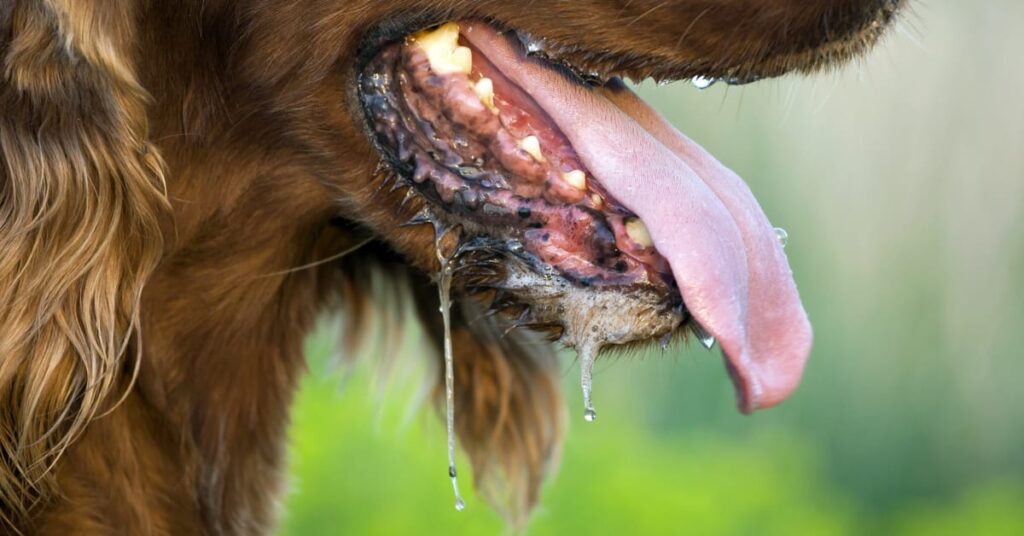
Yawning is not often recognized by pet owners as a sign of stress, but it is! If your dog is stress yawning often this could mean they are feeling anxious and are not sure what to do. Drooling or frothing around the mouth is another indicator of an anxious dog.
6. Hiding

This is a common stress reaction for both cats and dogs. If your cat is suddenly hiding under furniture or blankets, or your dog is fleeing to his crate or corner, this may be a sign of stress.
7. Accidents
Is your cat no longer using their litter box? Or is your pup having accidents in the house? This is one of the common signs of stress in pets rather than a potty training problem.
8. Body language
For pets body language is everything. Your pet may be communicating to you that they are stressed through their body language. This can include things such as flat ears, trembling, crouching, and tucked tails. If you see your furry friend taking one of these shapes it could be due to high-stress levels.
9. Not eating
Sometimes with stress comes the loss of appetite. Your dog may be so stressed out that they won’t even accept a high-value treat.
How to help relieve stress in pets
Luckily there are lots of things you can try to help relieve your pet’s stress. Below are some of our favorite ways to help ease your cat or dog’s anxiety.
Exercise
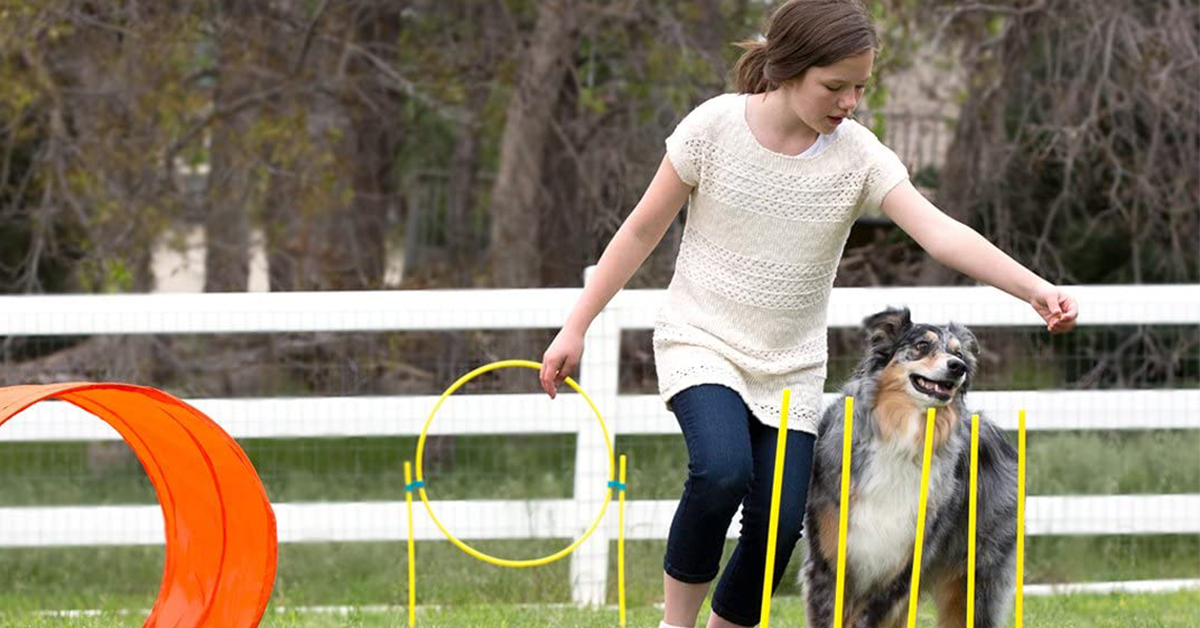
The most beneficial activity in order to keep your dog from feeling stressed is simply making sure they get enough exercise. If you are unable to get out and about for walks, an indoor agility kit or classic fetch toy are options.
Mental Stimulation
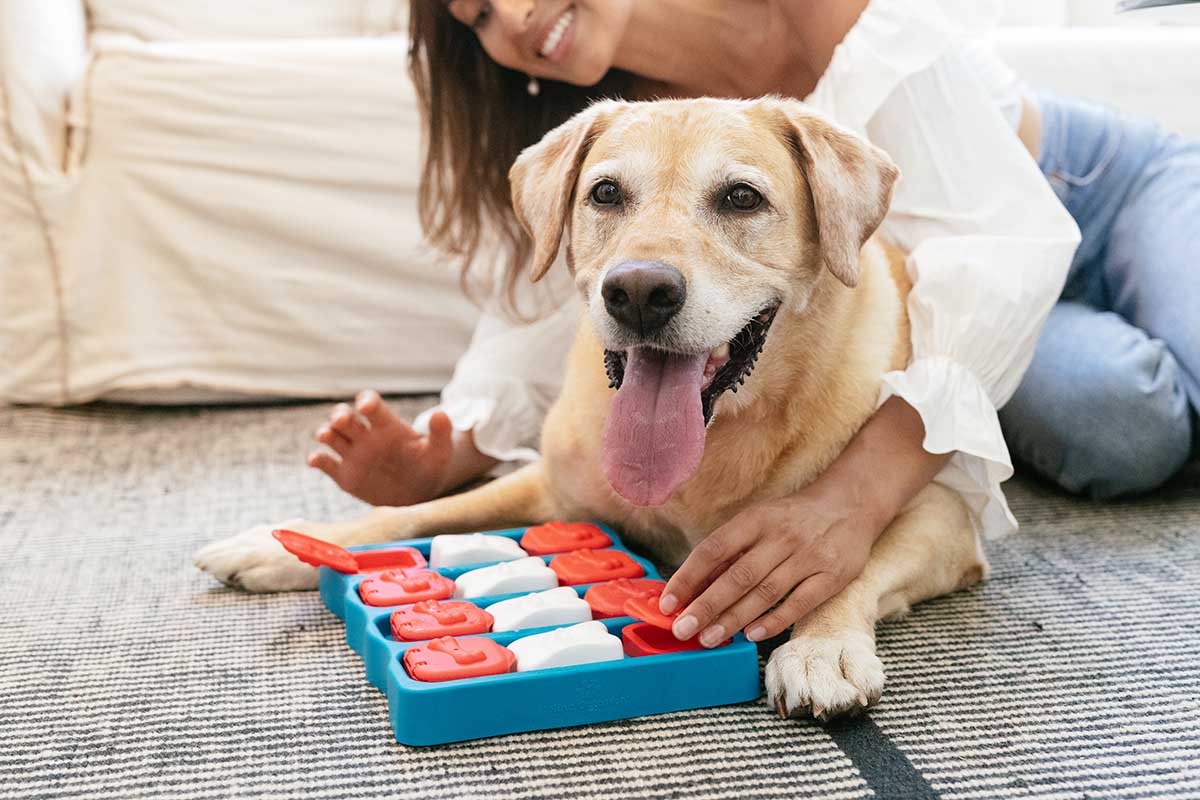
The next best thing to physical exercise for a stressed dog or cat is mental stimulation. Try a dog puzzle or cat puzzle toy to distract them from what may be causing them stress.
Fill the game with your pet’s favorite treat and watch them figure out how to problem-solve to get to them. Keeping their focus on a game that is challenging and rewarding may calm them and distract them from whatever is the source of stress.
You can also try filling up a durable rubber treat stuffer with their favorite treats, kibble, or peanut butter. Giving them something challenging and rewarding to focus their energy on will also allow them to feel less anxious.
Chewing
Help your dog feel better with a chew toy. Chewing is inherently calming for dogs.
Dogs relieve stress by chewing on what they are not supposed to — things like your furniture or floorboards. Instead of destructive chewing, you can direct that behavior to a durable chew like the Deerhorn.
Deerhorn Antler Alternative Dog Chew Toy
$15.99 $11.99
Satisfy your pup’s wild instincts with Deerhorn by Petstages! Made with naturally shed antler material, Deerhorn has a natural taste and smell your dog will love. Newly formulated to be gentler on your pup’s gums while maintaining the same durability. Made in the U.S.A. with care and free from harmful lead and phthalates. Available in 4 sizes, ranging from petite to large, perfect for any…
Scratching
Keep your kitties from excessively scratching their bodies or your furniture by re-directing that behavior to something that is equally satisfying but less damaging.
The Scratch & Rock Cat Scratcher is a great scratcher to have in your house that allows cats to lounge, rock, and scratch on it. It even has a track with a ball that runs through the center for extra excitement.
Licking
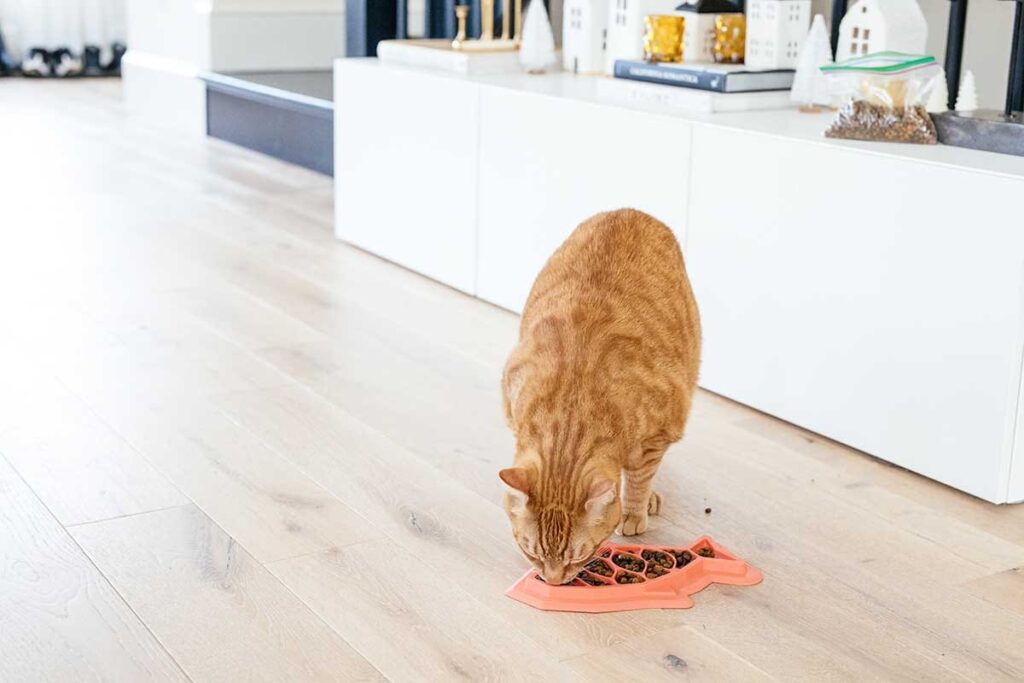
Licking is another calming activity for pets, but if they do it excessively it could cause health issues and hair loss. Try encouraging them to lick something other than themselves.
Using a slow feeder or treat dispenser, build a licking maze for your dog by filling them with your pet’s favorite wet food, yogurt, or peanut butter. You can also freeze it before giving it to your pet to make it last even longer!
Fishie Fun Feed Mat Cat Slow Feeder, Pink
$11.99 $10.99
Make your cat’s meal time fun and mentally stimulating! The Fishie Fun Feed Mat features meal-lengthening ridges and mazes, that keep cats engaged for longer at chow time. Slowing your cat’s eating pace can improve digestion and help reduce bloat. The Fishie Fun Feed Mat can hold up to 1/2 cup of either wet or dry food, and is made with food safe materials that are free from BPA, PVC and phthalates…
Creating a safe space
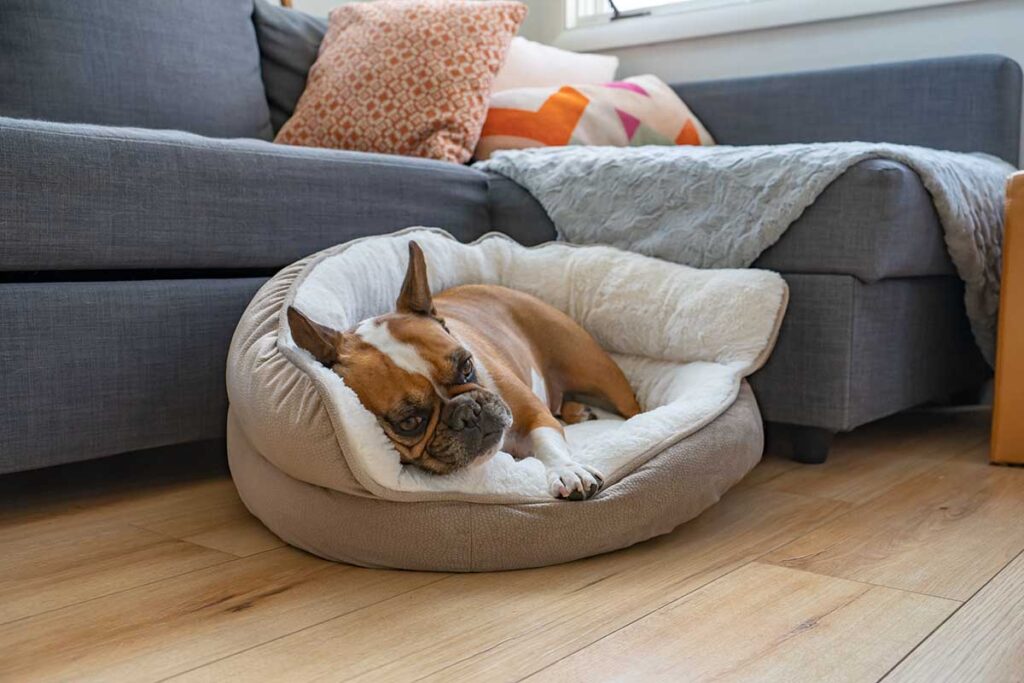
Another important step to take to keep your pet from feeling stressed is to make sure they have a spot in the home that makes them feel safe. That may be a calming dog bed, kennel, or crate. You can make that space even more soothing by putting a DAP diffuser nearby or a fluffy pet blanket.
Get support
If you still find that your pet is suffering from stress and anxiety, it may be time to consult your veterinarian, veterinary behaviorist, or dog trainer.
Dog training in a confidence-building class, for example, may help your dog feel braver around his stressors.
Some pet parents have no choice but to put their dog or cat on medication. Talk to your vet to discuss your options.
